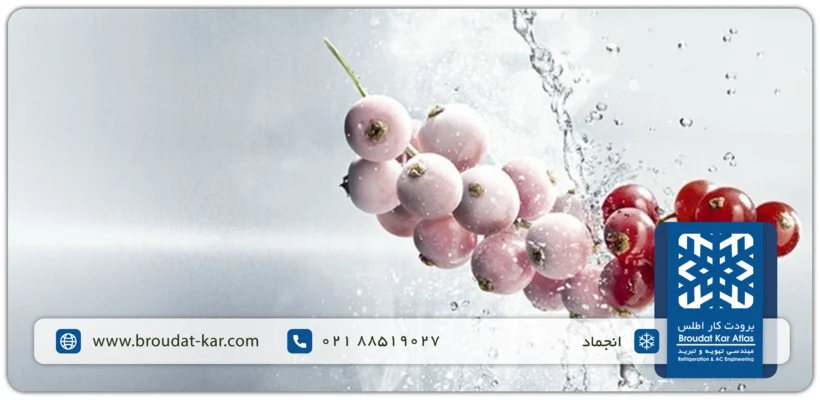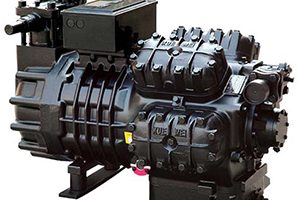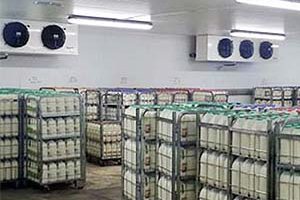Types of Food Freezing
Introduction to the Freezing Process
Freezing stands as a cornerstone food preservation technique, aimed at decelerating physical, chemical, and microbial processes that lead to spoilage. By reducing temperatures, freezing inhibits molecular and microbial activities within food, thus extending its shelf life. During freezing, product temperatures plummet from ambient levels to designated storage temperatures, prompting the water content within the product to transition into ice. While optimal storage temperatures vary by product, most frozen foods are preserved within the temperature range of -17 to -30 degrees Celsius.
Types of Freezing
Freezing systems employ various methods to extract heat from food products, each tailored to preserve quality and freshness effectively.
1. Blast Freezing
Utilized in tunnel freezing or Individual Quick Freezing (IQF), this method circulates cold air at high speeds over the product. The circulating air extracts heat from the food, transferring it to a refrigerant in a heat exchanger before recirculating.
2. Contact Freezing
Involves placing food directly onto or between metal plates cooled by a circulating cooling system. Heat is extracted from the product via direct conduction through the plates.
3. Cryogenic Freezing
In IQF systems using liquid nitrogen or liquid carbon dioxide, food travels through a chamber on stainless steel conveyors. Spraying the chamber with the cryogenic liquid rapidly lowers the temperature, freezing the product’s core to around -60 degrees Celsius within 10 to 35 minutes.
4. Combined Freezing or Cryomechanical Freezing
Combines cryogenic freezing with mechanical cooling for storage. Food is initially treated in a cryogenic system and then transferred to cold storage.
The freezing process entails three phases: cooling to the freezing point, extracting latent heat to form ice crystals, and continued cooling below freezing for optimal storage. The most challenging phase involves removing the latent heat of fusion, transitioning water to ice.
Choosing the Right Freezing System: Considerations and Factors
Selecting the appropriate freezing system is critical for preserving the quality and integrity of food products, as different freezing methods can impact dehydration, nutritional value, and sensory attributes. When choosing a freezing system, several factors should be considered to ensure optimal economic outcomes:
- Special Operating Needs: Assess any specific requirements or constraints of the production environment.
- Capacity: Determine the volume of product the system needs to handle efficiently.
- Freezing Times: Consider the required duration for freezing to achieve desired product quality.
- Quality Measurement: Implement methods for assessing and maintaining product quality throughout the freezing process.
- Product Characteristics: Take into account the unique properties of the food product being frozen.
- Appearance: Consider how freezing methods may affect the visual appeal of the product.
- Initial Cost: Evaluate the upfront investment required for installing the freezing system.
- Management Cost: Estimate ongoing operational expenses, including maintenance and energy consumption.
- Automation: Determine the level of automation needed for seamless operation and efficiency.
- Available Space and Process Integration: Ensure compatibility with existing facilities and streamline integration with upstream and downstream processes.
By carefully considering these factors, businesses can make informed decisions when selecting a freezing system that aligns with their production requirements and economic objectives.
This article has been curated and excerpted from the ASHRAE Handbook Refrigeration 2002, sourced from Atlas Refrigeration Company, a venerable entity in the nation’s refrigeration sector. With a rich history and a reputation for reliability, the company stands poised to offer consultancy services to employers considering investments in this domain.
Related posts
Types Of Food Freezing
Cold Storage Compressor | American, European, and Asian Brands Cold storage compressors encompass a diverse range, categorized by their performance
What is Industrial Cold store? An industrial cold store is a large-scale facility designed and constructed to preserve and
Individual Quick Freezing (IQF) IQF or Individual Quick Freezing is commonly used for freezing fruits, berries, vegetables, French fries, shrimp,






